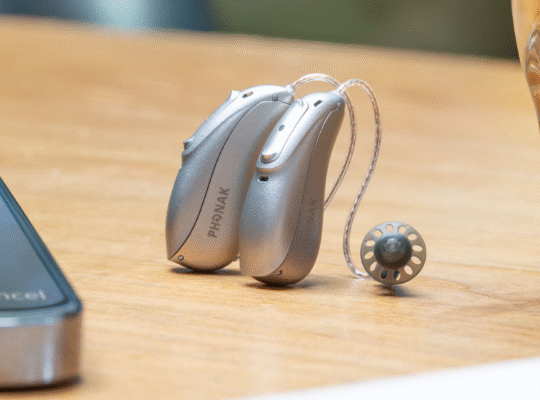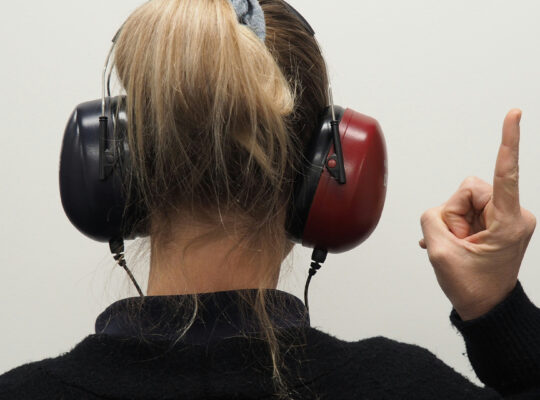Drum tubes. The word alone sounds a bit exciting, especially if your child turns out to need them. But not to worry: tubes are small, smart and, in many cases, a real relief. Literally and figuratively, because they help rebalance air and pressure in the ear. But what exactly are they, when do you get them, and how does it all work?
In this blog, we take you into the world of eardrum tubes. For parents, for people with recurring ear problems, or just anyone who wants to know how those little tubes can solve big problems.
What are eardrum tubes?
An eardrum tube – also called a ventilation tube – is a tiny plastic or metal tube that is inserted into the eardrum through a cut. It keeps the middle ear properly aerated. Because that’s exactly where it often goes wrong in people with recurrent ear infections or prolonged fluid behind the eardrum.
Normally your Eustachian tube regulates that aeration, but in many children (and sometimes adults) it does not yet work optimally. Result: fluid accumulates in the middle ear. And that often means ear pain, worse hearing and recurring infections. A tube keeps the eardrum “open” and allows air in – just like a vent in a window.
Why are eardrum tubes placed?
The most common reasons for tube placement are:
- Recurrent middle ear infections (more than three times in six months or four times a year)
- Prolonged fluid behind the eardrum (longer than three months)
- Hearing loss due to moisture (which, for example, reduces children’s ability to speak)
- Balance problems or behavioral changes in children
- Ear pain due to pressure changes, such as on an airplane
Young children are especially affected, as their Eustachian tube is not yet fully developed. But adults can also benefit from tubes – for example, if you often suffer from ear problems after swimming or while flying.
How does tube placement work?
In children, the placement of eardrum tubes is usually done under a short, light anesthesia. The doctor makes a small incision in the eardrum, sucks out any fluid or mucus, and inserts the tube. The entire procedure often takes only a few minutes.
In adults, it is usually done under local anesthesia and is done even faster.
The tube stays in place for an average of 6 to 12 months. After that, it usually falls out on its own, and the hole in the eardrum grows closed. Sometimes a second placement is needed if the problems return.
What does an eardrum tube look like?
It’s really tiny – about 1 to 2 millimeters in size. A kind of miniature ring or tube that is almost invisible to the naked eye. Yet it does an awful lot: it prevents fluid from accumulating and reduces the risk of infection.
What do you notice about tubes?
Most children (and adults) hardly notice they have tubes. What does notice:
- Less earache
- Better Hearing
- Less pressure on the ears
- Fewer infections
For children, this often means: better sleep, better talking, better behavior. And for parents: fewer sleepless nights and fewer antibiotics.
Sometimes you may hear some “popping” in your ear when you yawn or swallow, for example, but that’s normal. It means your ear is venting properly.
Can you swim with tubes?
A frequently asked question! And rightfully so, because water in the ear suddenly feels more exciting when there is an opening in your eardrum.
With modern tubes, the risk of swimming water infections is relatively low, but doctors often recommend using swim caps – especially in swimming water that is not completely clean (such as open water or a pool with lots of chlorine).
For children with tubes, we always recommend custom-made swim caps recommended. They close perfectly, are comfortable and ensure that water has no chance. Extra fun: at Zwemdopje.nl you can put together the swimming plugs yourself. Think glitter, bold colors or cheerful figures per ear. And during our swimmingcap walk-in on Wednesday afternoon and Saturday you can just walk in for measurements, without an appointment.
For short-term use are also universal swim caps or a swimming headband are a good alternative, for example on vacation or during swimming lessons.
Can you still fly with tubes?
Yes! In fact, tubes often actually make flying more pleasant. Most people with tubes experience much less ear pain or pressure problems during takeoff or landing. No more plugged ears or a nagging feeling. Useful for family vacations.
Are there any risks?
As with any medical procedure, there are risks, but with tubes they are very small. Sometimes:
- Does the tube fall out faster than expected
- Does the hole in the eardrum remain open (rare)
- Does an ear infection still come through the tube (but then the fluid drains more easily)
For most children and parents, the advantages far outweigh the disadvantages.
When should you get in touch?
Call your doctor if:
- There is persistent fluid or pus coming out of the ear
- Your child complains of earache despite tubes
- Hearing suddenly becomes worse again
Better to call once too many times than once too late, especially with young children.
In conclusion
Eardrum tubes may sound a little exciting, but they are a smart and effective solution to a common problem. Whether it’s recurrent ear infections, fluid behind the eardrum or pressure problems, tubes can make your child’s life (and yours) a lot more pleasant.
And with the right care – think good hearing protection, safe ear cleaning (with a Bebird with camera, for example), and swim caps – you’ll help keep those ears healthy.
Want to know more about custom swim caps or the swim cap walk-in at Zwemdopje.nl? We’re here for you. Because healthy ears, that’s what makes you happy. Especially when they can hear, play, dive and laugh as usual again – without pain.








